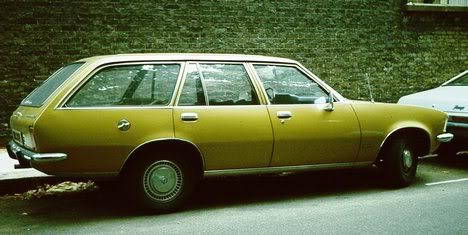We always see reports about the state of the U.S. automotive industry, and many factors come into play when assessing the health of the automotive industry and overall economy here.
What does the average age of cars mean for the automotive industry?
The average vehicle in the U.S. is now a record 11.5 years old, according to consulting firm IHS Automotive, a sign of the increased reliability of today’s vehicles and the lingering impact of the sharp drop in new car sales during the recession.
Drivers behind the wheel of older cars aren’t enjoying some of the latest advanced safety features or infotainment systems that effectively turn cars into cellphones on wheels. Then again, they don’t have to worry about hackers finding their way in to the car’s computer network through the cassette or CD player.
The average age of vehicles has been climbing steadily since IHS began tracking the number in 2002. As quality and reliability have improved, people have been holding on to their cars and trucks for longer. The average length of ownership for a new vehicle is now almost 6.5 years, IHS said. For a used vehicle, it’s five years.
Americans are buying cars at an annualized rate of more than 17 million vehicles, marking a high not seen since before the Great Recession. In fact, U.S. vehicle owners bought 42% more cars than they scrapped in 2014, according to IHS. The number of light vehicles registered in the U.S. hit an all-time high of 257.9 million units.
How are vehicles getting older, while Americans are buying newer cars, too?
Simple: They’re either keeping the old ones along with the new ones — know anyone who bought a new car and kept their old one in the driveway? — or the vehicle made its way into the used-car market, where someone else bought it.
For the most part, cars and trucks now have the same average age. For many years, cars had shorter lifespans than trucks, but their quality has now caught up.
Experts say there’s no rule for how long to hold on to an old car or truck. A car with good reliability can go for 200,000 miles or more, which can easily last a decade for some motorists, says Doug Love, a spokesman for Consumer Reports.
Automakers have substantially improved the reliability of their vehicles. Although it’s still possible to buy a “lemon,” it’s getting increasingly difficult.
Analysts say that most of the major automakers have overcome major quality issues. Now, industry surveys such as the J.D. Power and Associates Initial Quality Study typically examine minor quality issues such as ease-of-use of infotainment systems.
The number of vehicles on the road that are at least 25 years old is about 14 million. That’s up from about 8 million in 2002. Those are vehicles made in 1990 or earlier.
Meanwhile, the number of vehicles that are 16 to 24 years old is 44 million. That’s up from 26 million in 2002, according to IHS.
It is however, recommended that people should not be driving older cars without two key safety features introduced more than a decade ago: electronic stability control and side curtain air bags.
The average vehicle age shows no sign of reversing, but it is starting to plateau, since buyers have returned to the car market in big numbers. Sales of new cars rose from 12.7 million in 2011 to 16.5 million last year and are expected to reach or exceed 17 million this year. IHS thinks the average vehicle age will hit 11.6 years in 2016 but won’t climb to 11.7 years until 2018.
Vehicle age increased rapidly between 2008 and 2013, since more people were keeping older cars. In 2008, the average age of cars and trucks in the U.S. was 10 years; by 2013, it was 11.4 years, or 14 percent higher.
NARFA offers employee benefits solutions such as health insurance, dental, vision, workers compensation and much more to businesses in the automotive, roads, fuel, and related industries. Entering our 87th year, we continue to grow our power in numbers and our association boasts a 99% member retention rate. Find out about our best in class insurance solutions for huge savings and to protect your business and employees during these uncertain times. Please contact us today so we can get to work for you!
Thanks to our friends at the Los Angeles Daily News for contributing to this piece.
Recent Posts
The U.S. Department of Labor Announces Proposed Rule To Protect Indoor, Outdoor Workers From Extreme Heat
The U.S. Department of Labor has proposed a new rule aimed at protecting workers from extreme heat hazards. This initiative seeks to safeguard approximately 36 [...]
Supreme Court Overturns Chevron Deference: What It Means for Workplace Safety and Regulation
The landscape of federal regulation is set for a seismic shift following a recent Supreme Court decision. On June 28, in Loper Bright Enterprises, et [...]
Navigating the Compliance Maze: How NARFA Simplifies Employee Benefits for Automotive and Trade Industries
In today's complex regulatory environment, businesses in the automotive, roads, fuel, and related industries face unprecedented challenges in managing employee benefits. Recent studies show that [...]




